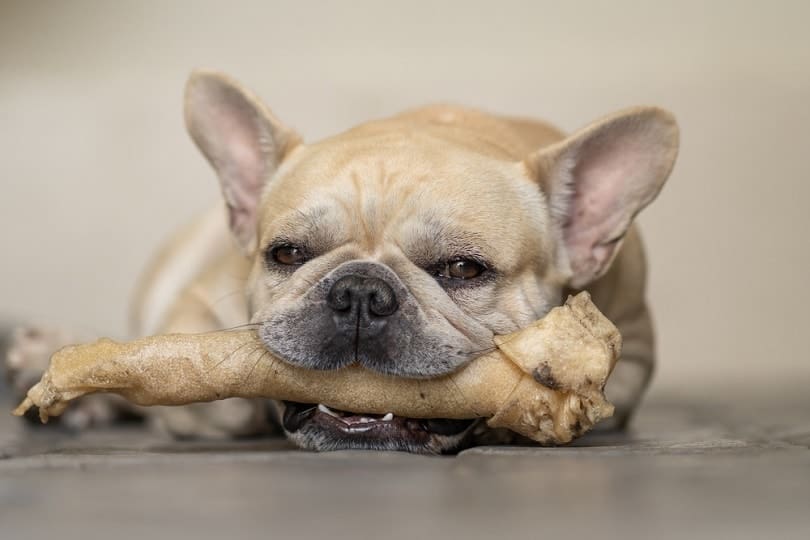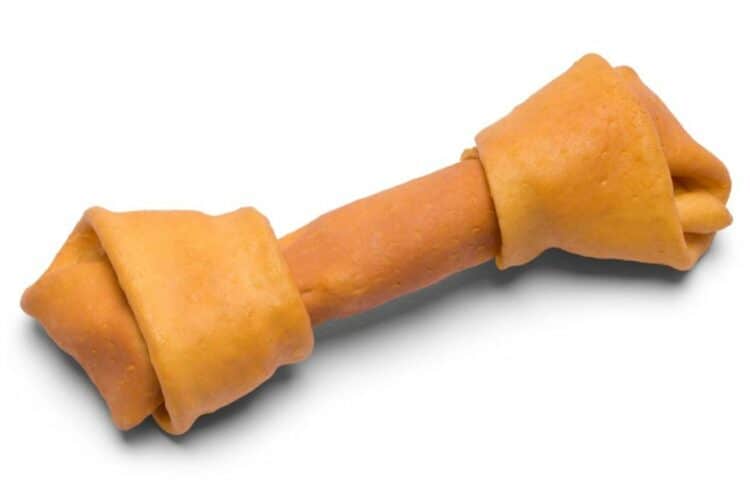All dog parents know that their companion loves to nibble on things, whether it’s wooden furniture, leather sandals, or in the best-case scenario, specially designed toys. However, not all these accessories are recommended for dogs, and some are even controversial. This is the case with raw hide chews.
Raw hide chews are made from animal skins and come in various sizes, shapes, and flavors. Generally, doggies love them and can chew them completely in just a few hours. But are raw hides good for your dog? Some are, but it depends on several factors, like where they were made, their ingredients, and how quickly your dog consumes them.
What Are Raw Hides Made Of?
Raw hides, as the name suggests, are made from the hides of animals, such as cattle or pigs, which are removed, brined, dried, and prepared to be chewed by dogs. These are essentially leftovers from the leather industry and often come from slaughterhouses. The skins are then placed in brines to slow their decomposition, but this does not prevent certain bacteria from growing. Subsequently, the brined skins are sent to tanneries, where they are treated with lime. The last hairs are also removed by chemical or physical processes.
What’s Wrong With Raw Hides?
Raw hides have several benefits, such as entertaining your dog for a while, giving your shoes and furniture a break, relieving anxiety, providing a delicious treat, and depending on the chews, supporting good oral health.
However, there are a few risks associated with chewing raw hides that are essential to take into account before giving any to your dog:
- Contamination by bacteria. Depending on where they were made, raw hide products can be contaminated with certain bacteria, such as Salmonella or E. coli.
- Gastrointestinal problems. Some dogs are more sensitive than others and may have an allergic reaction to raw hide, get an upset stomach, vomit, or have diarrhea.
- Choking and obstruction. According to the American Society for the Prevention of Cruelty to Animals (ASPCA), dogs find raw hide chews incredibly tasty. Thus, depending on their size, they can fully consume these products in a few hours or even a few minutes. Therefore, it is crucial to supervise your dog when they chew on raw hide, to prevent them from swallowing large pieces. These can cause choking and even gastrointestinal obstructions, which can be life threatening. Obstructions are more likely to occur in small dogs, but regardless, if the problem is not treated in time by a veterinarian, it can lead to the death of your dog.
Supervise your dog the first time you give them raw hide. Although the risks of contamination, gastrointestinal problems, or obstruction are not common, you should contact your veterinarian immediately if your dog exhibits one or more of the following symptoms:
- Regurgitation
- Vomiting
- Diarrhea
- Fever
- Lack of energy
- Refusal to eat
- Sudden weight loss
- Constipation

How to Give Your Dog Raw Hides
The ASPCA recommends that dog parents choose raw hide products designed for the species, size, and chewing habits of their canine companions. Additionally, the ASPCA encourages dog owners to actively observe their pet while chewing and to seek immediate veterinary attention if their pet swallows a large piece of raw hide, to avoid the risk of choking or intestinal blockage.
So, if you decide to offer raw hide to your dog, there are a few precautions that you can take to make it safer:
- Wash raw hide thoroughly to avoid any risk of contamination.
- Remove chewed raw hide before your dog ingests it, to avoid gastrointestinal problems and obstruction.
- Purchase raw hide chews made in the U.S.A., as quality standards are often higher.
When in doubt, ask your veterinarian which raw hide chew they recommend for your dog based on their breed, size, and age. You can also raise your concerns if you are still unsure about the safety of raw hide for your dog.
Bottom Line
Before giving raw hides to your dog, research beforehand to ensure that you are offering them a good quality product. Read the product label, talk to your veterinarian, and watch your dog closely when they chew their treat for the first time.
Featured Image Credit: Photo Melon, Shutterstock














